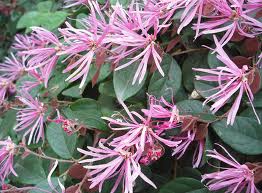Liriodendron
Liriodendron consists of two deciduous (leaf-losing) trees called Tulip Trees. One, L. Tulipifera, is a native of the eastern U.S. and the other, L. chinense, is from China. The American Tulip Tree is a very attractive tree that can grow up to 100 feet high. The leaves have an interesting square shape; they usually have 4 lobes and look as if they've suddenly been cut off instead of continuing to a point. They are 3 to 8 inches long and 4 to 9 inches wide, according to how actively the tree is growing and its age. They are smooth and glossy, dark green above with a lighter color below. The fragrant, 2-inch flowers open in early summer and resemble Tulips in shape. They have 3 sepals and 6 greenish-yellow petals spotted with orange at their bases. However, since the Tulip Tree doesn't usually bloom until it is 10 to 20 years old, the beautiful flowers are hardly noticed because they are so high off the ground and hidden among the foliage. Light brown seedpods follow the flowers and persist on the branches even after the leaves turn yellow and fall off. The wood of this tree is greenish-gray or brown and sometimes yellowish. It is easily worked, polishes well, and is widely used in carpentry and furniture work. It can be obtained in large sizes and is free from knots. The Chinese Tulip tree is similar to the American Tulip tree but has smaller flowers.
Pot Cultivation
Tulip trees should be planted in deep, loamy soil with peat or leaf mold placed around the roots at planting time. Once the trees have been placed in their permanent positions, they shouldn't be disturbed. Young trees should be pruned to check the development of wide branches at the expense of the trunk. Make sure to train the leading shoot so that a single trunk is carried well into the head of the tree. The reason for this is if numerous trunks or heavy branches are allowed to develop low down, they are prone to injury from storms.
Propagation
Whenever possible, use seeds to increase these trees, but the Chinese kind (when seeds aren't available) and varieties of L. Tulipifera have to be grafted on seedlings of the latter.
 |
|
L. chinense. |
|
VARIETIES
- L. Tulipifera & var. aureo-maculatum, aureo-marginatum, integrifolium, fastigatum;
- L. chinense.





